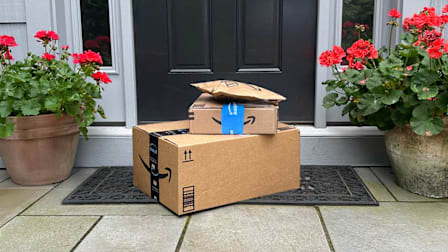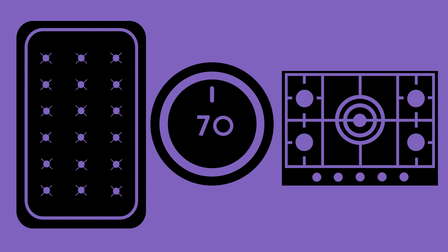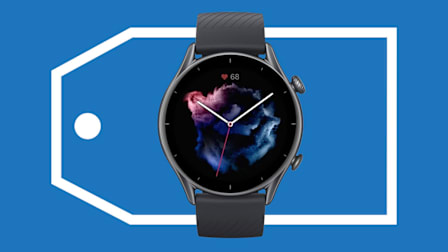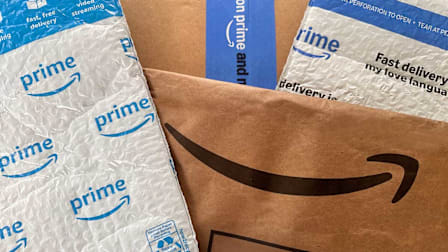Shop Smarter With the Consumer Reports Price Tracker
As tariff negotiations continue to make news, we're following the prices of 16 popular products to help you navigate marketplace shifts
When you shop through retailer links on our site, we may earn affiliate commissions. 100% of the fees we collect are used to support our nonprofit mission. Learn more.
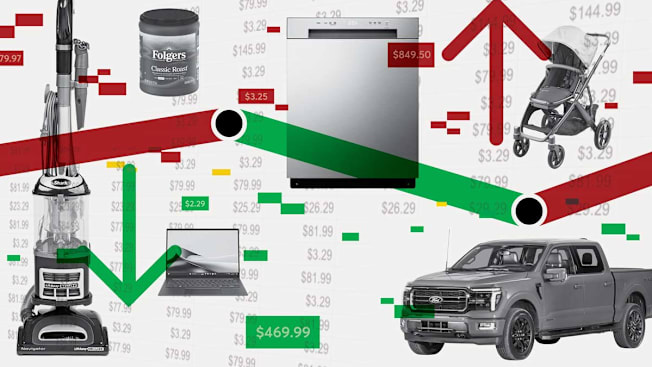
If you’re fretting over the price of coffee, cereal, and eggs these days, you’re not alone.
More than half of adults in the U.S. are feeling stressed over the cost of groceries, according to a recent poll from The Associated Press and the NORC Center for Public Affairs Research. And Consumer Price Index data reveals that apparel, home furnishings, and appliances are ticking up in price, too.
Consumer Reports' Price Tracker
What to Know
Certain products are harder to find these days, whether you’re shopping online or in a store. CR’s market analysts keep a close eye on availability. They select all of the items that enter our labs—from toaster ovens to baby strollers to SUVs. And in recent months, they’ve seen more items than usual listed as out of stock.
They say that companies are also introducing fewer new models and experiencing more delays in product releases this year. These trends are particularly apparent in home appliances and electronics. It’s very hard to find new printers, for example, says CR analyst Nish Suvarnakar.
He and a colleague, Allie Chilicki, have noticed fewer improvements, new features, and innovations in the product categories they follow. In some cases, major manufacturers are touting small changes as big advances, Chilicki says. In washing machines, these include details like updated color options for control panels and new filters that are supposed to remove pet hair.
In large-appliance categories—washers, dryers, dishwashers—Chilicki has seen limited stock and longer than usual delivery times, too. If you buy LG’s new front-load washer, for example, you may have to wait until Tuesday, Nov. 11, for Best Buy to deliver it. And if you offer to pick it up yourself, you’ll save only one day of waiting.
Bottom line: If you want a product with exciting new innovations, you may have to wait another year. On the other hand, you can save yourself some money by going with last year’s model, and you won’t be missing out on much.
Baby Products Are Getting More Costly
In early July, Chicco raised the price of the child car seat we’re tracking by $10. That mirrors the shifts new parents are seeing with many baby gear items.
In the past few months, prices have increased on more than 4,000 products listed on the Babylist registry site, according to Emily Katleman, senior manager of marketing for the site. On average, those items are up 16 percent, with prices for some strollers and car seats jumping by 30 to 40 percent.
But some prices are coming back down. UPPAbaby and Mockingbird have both lowered prices on products that spiked earlier this year. For instance, the UPPAbaby Vista stroller rose by $300, then dipped by $200, and is now selling for $999.
“It’s a positive signal,” Katleman says, “but also reflects the volatility parents and brands are navigating as tariff uncertainty continues.”
A November trade deadline with China looms large, given that most car seats, strollers, and cribs are produced in that country. Some baby items were exempt from new tariffs during Trump’s first term, but there are no such measures this time around.
One piece of advice from our safety experts is to be very cautious when buying secondhand safety gear, such as car seats.
Head-Scratching Pricing Practices
If you often search for deals, you’re familiar with the list prices retailers post when promoting discounts.
For example, the LG washing machine we’ve been tracking since mid-May now sells for $848 to $899. But retailer websites make it look like you’re getting a great bargain by including a list price, too. Home Depot and Lowe’s say the appliance is being discounted from $1,199. At AJ Madison, the figure is $1,319.
So where do those list prices come from?
According to LG, the $1,319 at AJ Madison is the manufacturer’s suggested retail price, also known as the MSRP. The $1,199 shown at Home Depot and Lowe’s is LG’s minimum advertised price, or MAP. Manufacturers use a MAP to protect the value of their brand, preventing retailers from pitching products at bargain basement prices, though the retailer can actually sell those items at any price it wants.
Enforcing the MAP can be tricky, says Utpal Dholakia, a professor of marketing at Rice University Business School in Houston. MAP pricing is legal under the antitrust laws here in the U.S., as long as the price is set unilaterally and isn’t specific to any retailers. In many other countries, including the U.K. and those in the European Union, the practice is restricted because it can hinder competition.
In the U.S., manufacturers try to enforce compliance with their MAPs, but not all companies have the same pull. “Apple has more brand power, so I would guess their MAP policies are far more stringent and something that retailers follow more strictly,” Dholakia says.
So does that washing machine ever sell for the MSRP? Or even the lower MAP? It’s hard to say, but LG currently offers it for $899, and Wayfair does, too.
What does that mean for bargain hunters? A product’s price might be the same across retailers, Dholakia says, but the details can vary. One retailer may provide benefits such as free delivery and installation, free haul-away of the old appliance, an extended warranty, or a maintenance plan. That’s where you can look for a deal.
Shopping Tips
Here are a few more things to keep in mind:
Don’t panic-shop. It’s easy to get caught up in the fear of rising prices, but don’t lose your cool and buy things you’ll regret owning later.
Don’t hold off on the items you’ve planned to purchase. If you’ve been gearing up to buy a new refrigerator, doing it now still makes sense, especially if you have money budgeted for it and the price has remained steady.
Choose reliable products. Higher prices could persist, so choose products that are likely to serve you well in the long term. CR members can use our ratings to review the most and least reliable brands in many categories, including central air conditioning systems, dishwashers, dryers, heat pumps, refrigerators, vacuums, and washing machines.
Shop for older models. TVs, laptops, and smartphones that are a year or two old often remain available at stores even after newer models arrive. The iPhone 16, for example, dropped $100 in price this month after Apple introduced the iPhone 17. The AirPods Pro 2 and Apple Watch 10 are selling at a nice price now, too ($199 and $329, respectively).
Consider a used or refurbished product. While this advice doesn’t work equally well for all categories, you might find that purchasing a factory-refreshed or gently used appliance, laptop, or phone can save you money. Apple, Best Buy, LG, Samsung, and others certify the items they resell and even offer new warranties.
Use CR for Smart Buys and up-to-the-minute deals. Consult our ratings for help finding products with a nice price and admirable performance. Apple and Samsung both sell well-made, budget-friendly phones, for example. (See the iPhone SE and the Galaxy A25 5G.) They’re much less expensive than flagship models but still do almost everything you want a modern smartphone to do.
Consumer Reports also has a devoted team of deal seekers who continually round up the best bargains on highly rated products. They’re already searching for the best Amazon Prime Big Deal Days offers (Oct. 7-8). You can find their early picks at the CR Deals hub.

















